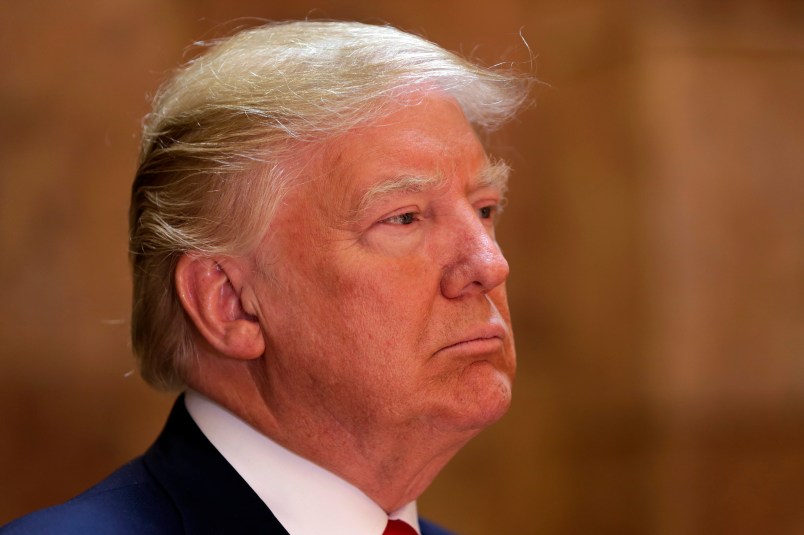Several times over the years I’ve told the story of the first big political prediction I got right – less than a year into my first job in journalism. It was the fall of 1998, in the build up to President Clinton’s impeachment, and I was telling my officemates that I thought Democrats would pick up seats in the November election. I tried to write about it but my editor wouldn’t let me. (He said I would embarrass the publication.) This was contrary to what virtually everyone else predicted. So what special insight did I have? Really, none. I watched the public polling and paid attention to what those polls were saying. Contrary to the widespread predictions of a GOP wave, they suggested a modest Democratic gain, which is precisely what happened. Everyone else saw the same polls. But almost everyone else had come up with explanations for why they couldn’t be right.
When flight instrumentation first became viable, aviation educators began teaching pilots instruments-only flight. The gist is simple: only pay attention to your instruments. Many veteran pilots insisted that in a crisis situation the key was to go by intuition or ‘feel’. But numerous experiments and tragic experience showed that this was not true. With poor visibility, a pilot’s perception of speed, direction, whether he or she was right-side up or upside down was consistently wrong. Still today, a good bit of pilot training turns on the difficult process of learning to disregard what your senses tell you must be happening and following the instrument panel that tells you what actually is happening.
For just the same reasons, no one has any business being surprised that Trump is now the Republican nominee. Don’t get me wrong. Polls can obviously be wrong. They sometimes miss a race, sometimes dramatically. But when consistent and sustained polling data conflicts with your logic, there’s quite likely something wrong with your logic.Trump is the perfect example.
Starting in early July of last year, only weeks after entering the race, Trump moved into a nationwide lead and never looked back. For nine months, Trump lead the polls and never once lost that lead. Indeed, from early August until today his lead steadily grew from roughly 25% to 50% support today. You have to go back to George W. Bush in 2000 to see domination on anything like that scale – and Bush had a lock on establishment backing from the outset. Looked at from this perspective it’s remarkable that anyone could have looked at this race at any time in recent months and not concluded that Trump was the overwhelming favorite to win the nomination.
There were various arguments why Trump wouldn’t win. His popularity would fade. He could only dominated a divided, overcrowded field. He had a natural ceiling at 25%, then 30%, then 40%. He’d finally saying something too outrageous. None of these arguments made much sense but they carried most punditry for months.
Now in the first glow of Trump’s nomination, we’re hearing all sorts of arguments about how the political magic he pulled in the GOP primaries he’ll now bring to bear against Hillary Clinton. He’s agile. He’s free to change positions whenever he pleases. He just hasn’t started in on Hillary yet. The normal rules don’t apply to him.
Again, let’s look at what the polls suggest.
This isn’t Trump’s debut with the national electorate. There’s been a consistent story over the last ten months: Trump’s persona, campaign and policy positions have slowly built up support among Republicans while alienating virtually everyone else. His negatives are extraordinarily high among numerous segments of the electorate – most notably, Hispanics, African-Americans, millennials and women. And he consistently, indeed virtually always, loses head to head match-ups with Hillary Clinton. Indeed, even in Clinton’s very weakened state, Clinton has not only maintained her lead over Trump but has slowly but steadily increased that lead from August until today.
We should expect – and we are already seeing – both Clinton’s and Trump’s net favorability ratings go up over the coming weeks, as party members coalesce around their standard-bearers as drive up approval rates within their won parties. But as it will happen for both there’s little reason to believe it will affect their relative standing. Let me reemphasize the point. Polls aren’t always right. And you need to know how to interpret them. Ted Cruz was polling fairly well against Hillary Clinton until he started to get a lot of press attention, at which point he started to collapse because everyone hates Ted Cruz once they get to know him.
With Trump and Clinton we’re dealing with two candidates who have been the focus of intense media attention for a year. In different ways, they’ve been in the media spotlight for decades. The polls are telling us a pretty clear story. Trump is very popular with base Republican voters, particularly older and whiter and male ones. Everything he’s done to gain that popularity has made him extremely unpopular with almost everyone else. Changing that will be very hard. Polls, if you actually pay attention to them, have predicted this cycle quite successfully. No reason to believe that will change in the general.






